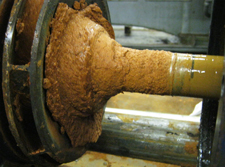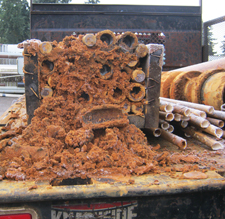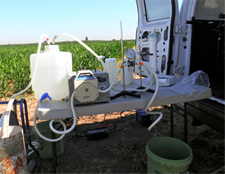Metagenomic analysis of groundwater wells
Summary:
California uses approximately 15 billion gallons of groundwater per day, more than any other state in the United States. Currently, groundwater accounts for about half of California’s water supply. Biofilms formed in groundwater wells pose two potentially serious hazards to the state’s drinking water. First, these biofilms may produce toxins that can directly affect human health. Second, these biofilms could overgrow, leading to biofouling issues that can ultimately cause reduced production or complete loss of a groundwater well. Both of these issues are directly related to the composition of microbes within the biofilm of the groundwater wells. This project analyzed the biofilm metagenomes of several groundwater wells to look for enrichment of gene clusters that may adversely affect water drinkability or production. The results were used to develop a risk assessment approach and targeted intervention strategies to alleviate risks to ensure a safe and reliable drinking water supply.
Investigators:
Clarissa J. Nobile, Principal Investigator
Assistant Professor, School of Natural Sciences
University of California, Merced
Co-Investigators:
- Will Ludington, University of California, Berkeley
- Aaron Hernday, University of California, Merced
- Glen Wallace, Pacific Groundwater Group
Project description:
California uses approximately 15 billion gallons of groundwater per day, more than any other state in the United States. Currently, groundwater accounts for about half of California’s water supply. Microbial communities, called biofilms, formed in groundwater wells pose two potentially serious hazards to the state’s drinking water. First, these biofilms may produce toxins that can directly affect human health. Second, these biofilms could overgrow, leading to clogging/biofouling issues that can ultimately cause reduced production or complete loss of a groundwater well.
Both of these issues are directly related to the composition of microbes within the biofilm of the groundwater well, yet very little is known about the actual microbial population existing in these biofilms. This project analyzed the complete genomic profiles (metagenomes) of the microbial communities in groundwater wells to look for enrichment of predicted biosynthetic gene clusters that are deemed likely to adversely affect water drinkability and/or production. This list of “hazard genes” was created based on the putative function of the gene cluster and by correlating the gene cluster with “problem wells,” which we defined as wells with impacted water quality, or with reduced production due to biofouling.
The project’s goals were twofold: 1) to determine the correlation between “hazard genes” and the chemical signatures of the wells so that risk can be assessed through routine chemical monitoring and 2) to develop targeted intervention strategies to alleviate risks when identified in order to ensure a safe and reliable drinking water supply.

Biofouled pump from a “problem well."

Biofouled pipes from a “problem well."

Water sample procedure to concentrate microbes. (all photos Clarissa Nobile)
